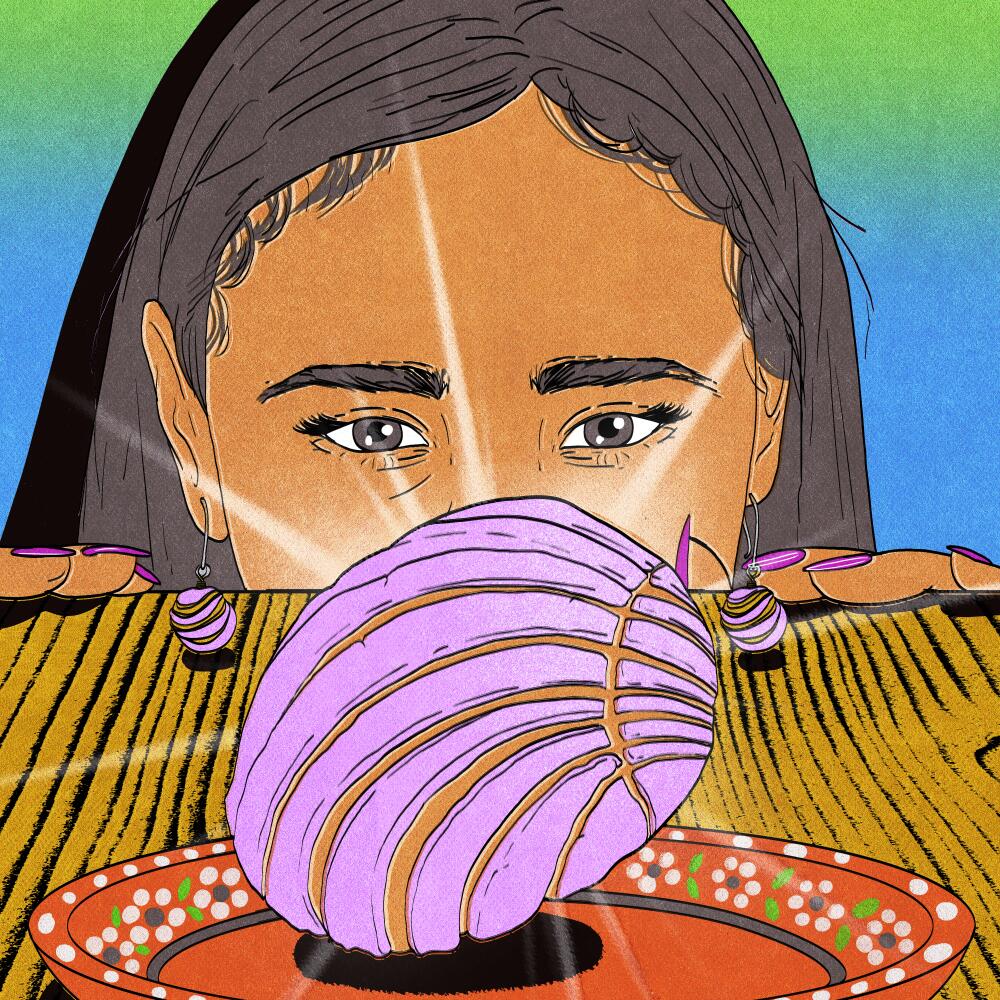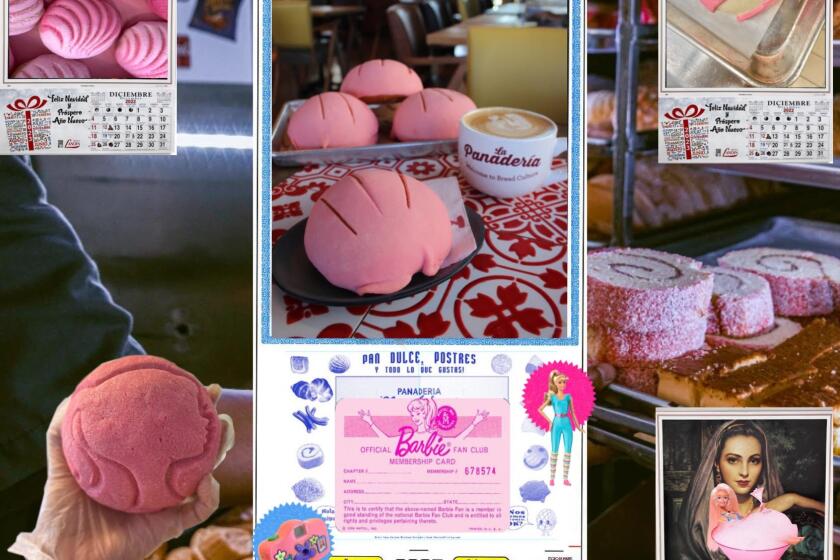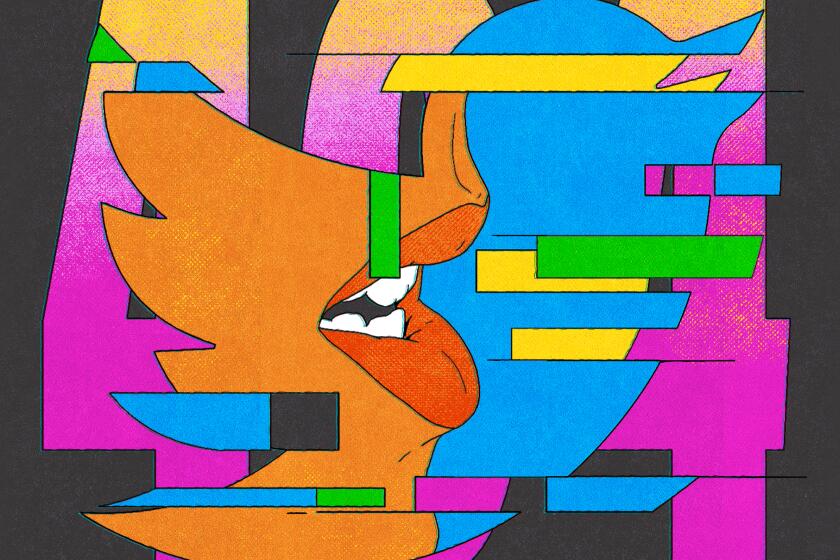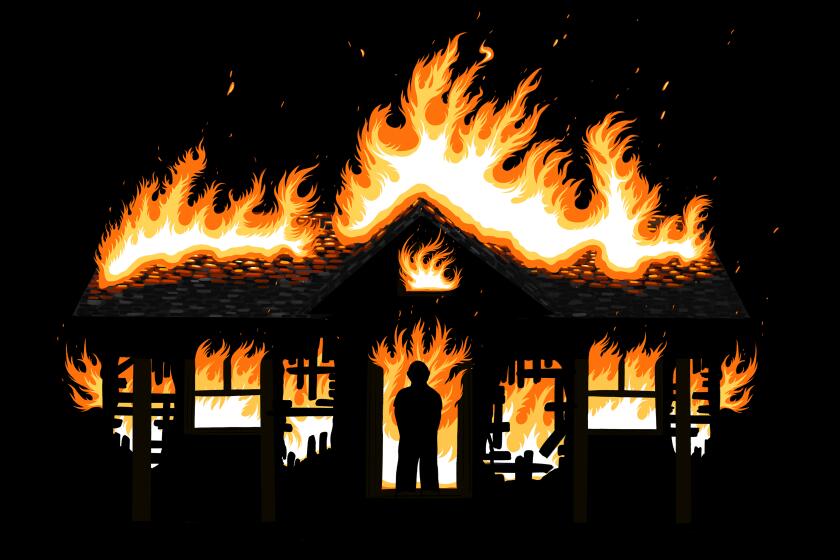
- Share via
Not all pan dulces are created equal. Cuernitos, puerquitos, orejas, they each have their place, sure. But one stands above the rest, at least in terms of icon status: the concha.
Indeed, the fluffy, brioche-like bun topped with colorful, crumbly seashell designs has attracted quite the cult following, inspiring a slew of merch and art. For Chicanos in particular, the sweet treat has become a mascot. Just look at Panaderia Vanessa, a California bakery pumping out delicious Barbie-themed conchas. But what is it about the concha that has elicited such fanfare?
I remember being a little kid and visiting my cousins in Texas with my abuelos. My abuela carried all her money in a Ziploc bag; crisp, green bills folded neatly inside the plastic. If we woke up early enough, they would take us with them to the nearby panaderia. You had to get there when everything was still fresh, after all.
In anticipation of the new “Barbie” film release this weekend, bakeries across the country have created a new type of Barbie to consume: a traditional Mexican concha.
These were magical trips, not least because I had never seen a dollar stretch so far. We would climb out of Abuelo’s car, and Abuela would give us each a dollar bill, and we could get almost anything we wanted.
Almost.
Money went far in the panaderia, but I was still overwhelmed with options. The hardest part was picking which pink, sugary confections to take home with me. But I never came back without conchas. The conchas were an absolute must.
I have my theories about what drew me to the concha as a child, and what draws so many people to them as adults. For one, it must be said, the concha stands out as uniquely beautiful. Coming to us in soft browns, yellows, and pinks, the concha is the prettiest girl on the shelf in the panaderia for sure. The unique design on top gives its different variants little personalities of their own, with some opting out of the traditional seashell pattern to do something different, as in the case of the concha I recently had at Estate Coffee in San Antonio that took inspiration from turtles. Look at this guy!
So the concha has aesthetics on its side, which, in general, is half the battle when it comes to mascots. But I think there’s more to it when it comes to the widespread affection for this little bakery item (well, in some cases, I suppose they are gigantic, but still). Beauty aside, I think the concha is so lauded because it exists in that Chicano Goldilocks Zone that draws from both the foreign and the familiar.
As someone who wanted to break into journalism with no connections, I was able to access people through Twitter I’d never have been able to without the social media platform.
What do I mean by that?
Much has been written (some of it by yours truly) about the sideways sense of homesickness that permeates the Chicano experience. I’m not here today to argue whether it’s valid or not, but for many people born in the United States to families with cultural ties to Mexico, the question of position within that culture arises. The ensuing interrogation can create discomfort, or even full-blown identity crises.
For people in the diaspora whose grandparents, like mine, were intent on assimilation and didn’t feel it necessary to pass down Spanish or certain customs, food can act as a more accessible entry point into learning more about one’s heritage. You don’t have to speak the language of a country to try its cuisine, after all, and learning one recipe is a bit easier than remembering to use Duolingo every single day for the rest of your natural life.
Food often provides a cornerstone of identity-building for diasporic people living in the United States, and this is no different for Mexican Americans. It might even be especially the case for Mexican Americans, as Mexican cuisine is so prevalent in the U.S., offering a multitude of genres-within-genres and region-specific specialties to choose from. But back to the concha. This unique combination of style and accessibility come together to create a sweet bread that feels like it comes from an entirely different world, even as it can be bought just down the road.
Learning Spanish wasn’t part of a quest for identity. I was proud of this fact; that I was pursuing fluency on my own terms and not for cultural credibility.
For many Latinos in the U.S. in general, these are the necessary ingredients for a celebrated dish, one that proudly proclaims a history in a different place, but can be made with love by seasoned professionals, by abuelas and chefs alike, here in the country where we live. The concha, with its bright colors and unique patterns, announces itself as foreign, but remains a staple of panaderias in the U.S.
They spring forth from that narrow gap that arises between cultures, from the timeless, spaceless terrain of worlds between worlds. The concha has a fuzzy history that draws from colonial French influences in Mexico, but, as is the case with many different kinds of cuisine in the world, its exact origins are difficult to pinpoint. This lack of clarity is fertile ground for romanticization, for imagining a kind of timelessness.
Putting on my “critic goggles” for a moment, I think this kind of fantastical thinking can at times lead to silliness, or even outright historical inaccuracy. If you had any Chicano friends as a kid, you will probably recall a popular genre of art, often associated with lowrider culture, that depicts a muscular Aztec warrior holding a limp Native woman in his arms. He might be standing atop a pyramid and gazing up at the sky. I, for one, appreciate these illustrations for their camp quality, even if they are examples of how Aztecs exist in a highly questionable space in the Chicano imagination. Look at this example I found. Ah, it makes me nostalgic.

Love it or hate it, in creating mascots for a culture between cultures, Chicanos have gravitated toward flashiness and exaggeration. I say that in a positive way. I think of the documented affinity for zoot suits in Southern California in the ‘40s, a flamboyant statement by pachucos inspired by the local Black community. I think of the appeal of oversized Guadalupe back tattoos, and I think of the loud, fervent adoration of Selena Quintanilla, who was killed in the ‘90s but who still has a strong hold on Chicano imagination, perhaps due to the scarcity of other idols.
There is a real appetite, to make a food pun about it, for commonly understood symbols to bring the project of Chicano identity into greater adherence. Sometimes I get bored and cynical with the constant rotation of these symbols — Vicks VapoRub (of ponte Vicks y ya fame), “Stand and Deliver” starring Jaime Escalante, and, yes, even our beloved Selena, for whom we would do anything. It sometimes gets old. It sometimes gets tiring. But, on other days, like today, even, it feels fun. It feels like we’re sharing something from a collective memory. It feels like early mornings in the panaderia with our abuelos, picking out sweets.
Regardless of whatever meaning might or might not be assigned to it, conchas taste great at breakfast, dipped in coffee.
John Paul Brammer is a columnist, author, illustrator and content creator based in Brooklyn. He is the author of ”Hola Papi: How to Come Out in a Walmart Parking Lot and Other Life Lessons” based on his successful advice column. He has written for outlets like the Guardian, NBC News and the Washington Post.
More to Read
The Latinx experience chronicled
Get the Latinx Files newsletter for stories that capture the multitudes within our communities.
You may occasionally receive promotional content from the Los Angeles Times.










